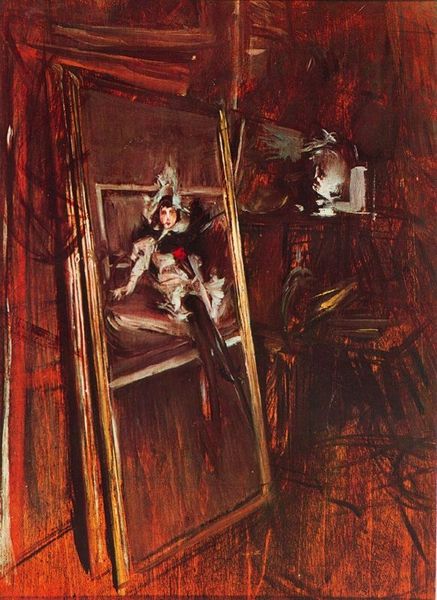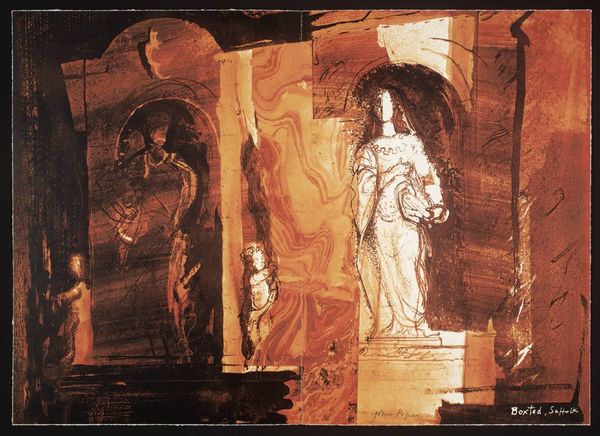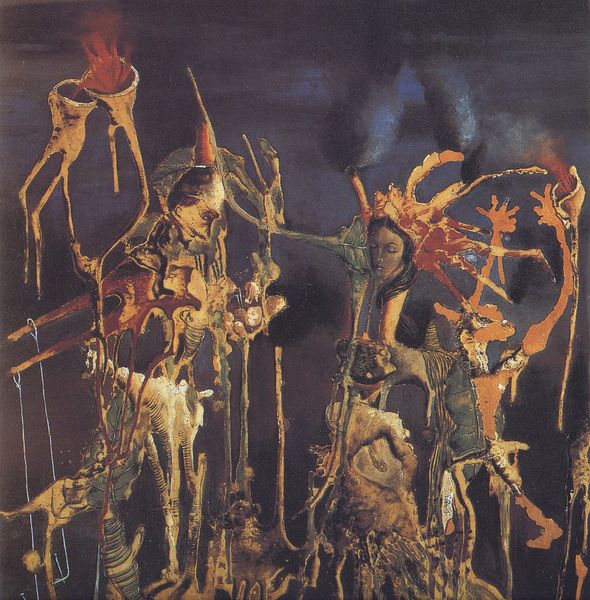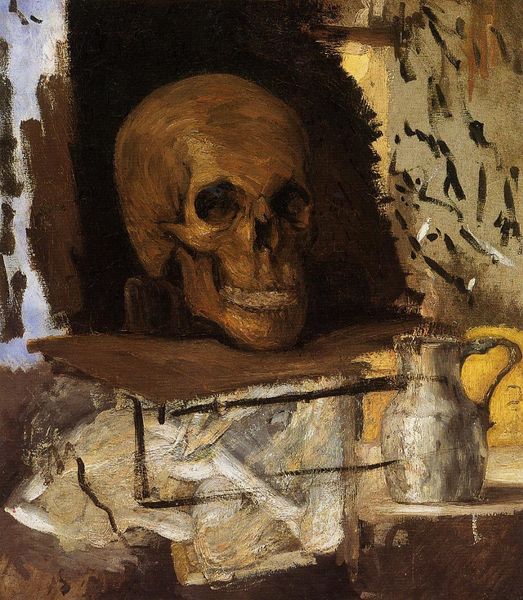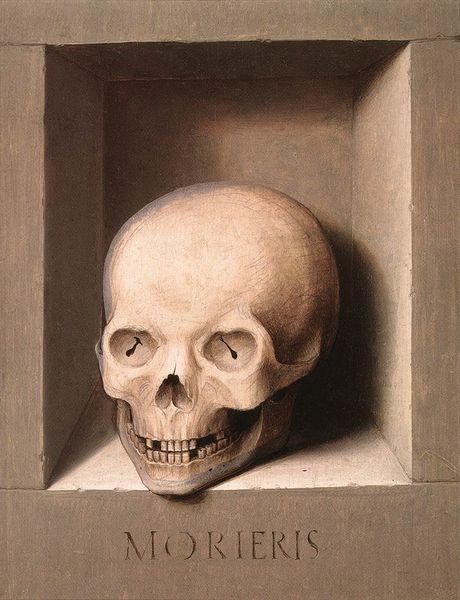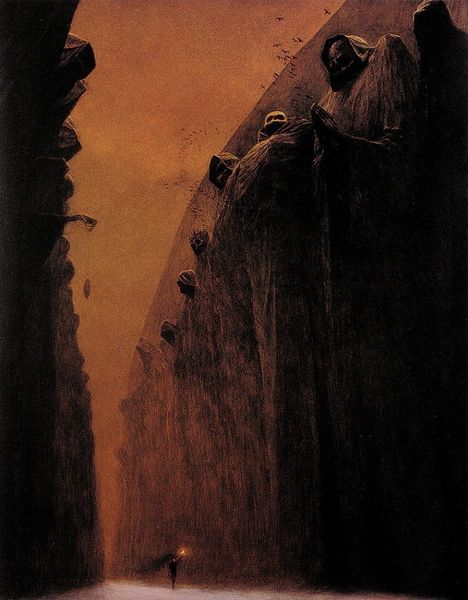
The Studio Wall 1872
0:00
0:00
adolphmenzel
Hamburger Bahnhof (Museum für Gegenwart), Berlin, Germany, Kunsthalle Hamburg, Hamburg, Germany
painting, oil-paint
#
portrait
#
painting
#
oil-paint
#
sculpture
#
oil painting
#
academic-art
#
realism
Dimensions: 79.3 x 111 cm
Copyright: Public domain
Editor: Here we have Adolph Menzel's "The Studio Wall," created in 1872 using oil paint. The sheer density of plaster casts and tools gives it a cramped, almost claustrophobic feeling. What strikes you when you look at this work? Curator: The beauty of this work for me resides in understanding it as a catalogue of materials. Look closely—we have the plaster casts themselves, clearly objects produced within a specific artistic economy. Consider the labour involved in creating these training aids, designed for mass production and consumption by aspiring artists. Menzel isn't just depicting a studio; he’s showing us the physical infrastructure that supports artistic production, don't you think? Editor: Absolutely! The tools, too – it's like he’s saying something about the democratization of art through readily available materials and reproducible forms. Does that reading align with the art world's values at the time? Curator: Precisely! Remember that academic art of the time focused on idealization, so this realistic, almost gritty depiction of the 'backstage' challenges traditional notions of artistic genius, doesn't it? Menzel foregrounds the means of artistic creation – labor and materiality -- effectively bringing art down from its pedestal. This act connects art closer to other craft or manufacturing endeavours. Editor: That makes so much sense! I'd always focused on the individual components as isolated objects, but seeing them as part of a production chain…it’s a totally new way to interpret the painting. Curator: Exactly! Reflect on the historical context of growing industrialization, it makes the materials on display seem both unique artifacts and commodities. Hopefully this will invite us all to consider not only what art *represents*, but how it's materially and economically made. Editor: I’ll never look at a still life the same way again! Thanks!
Comments
No comments
Be the first to comment and join the conversation on the ultimate creative platform.

